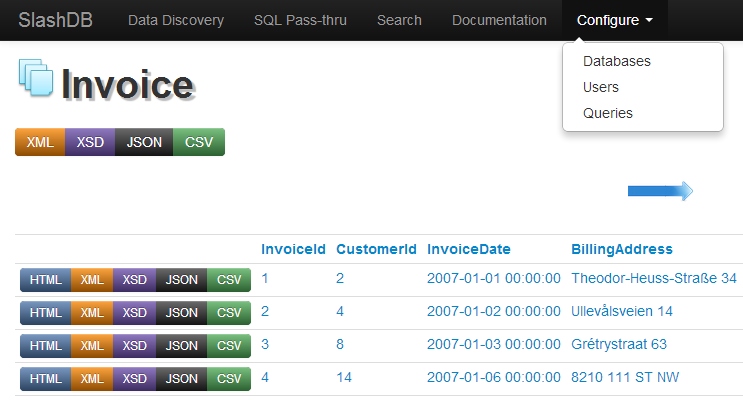SlashDB version 0.7 has just come out. This time, improvements focus on three things: user experience, robust system administrator functionality and enhanced authorization mechanisms. Try the new SlashDB and you will appreciate the benefits of data accessibility from anywhere.
Here’s what’s new in 0.7:
For data scientists, business analysts
SlashDB has this dual personality. It is the API developer’s best tool to incorporate databases into his/her web or mobile apps but the equally important aspect of the system addresses the needs of data scientists, business analysts and rapid application developers. Using SlashDB they get straightforward access to relevant data in its unobstructed form. Thanks to our latest GUI enhancements the web interface is now even more user friendly. New, responsive design allows for comfortable browsing through data on mobile devices while automatically generated, drill-down, filtering and sorting links help casual user discover the data and system’s functionality on the fly. As before you can use your favorite data analysis tools such as Excel, Matlab, SAS, R etc. to work with live data referenced by /db URLs.
For system administrators
Previously most settings would require editing configuration files on the server. We still have that option but since version 0.7 nearly all settings can be made in the web GUI or via a REST API. New authorization schemes now allow even greater flexibility in creating user segments with distinct permissions to data and system functions. Special users “admin” and “public” have been added. The former has full permissions to all system functions. The latter can be configured to offer limited access without requiring a login.
For CTO/CIO and software architects
Using SlashDB as a mobile enterprise application backend or to build an API is a sensible choice. Not only can you instantly leverage prior investments in databases but also remain in full control of your solution. That is because unlike SaaS offerings SlashDB can work in your data center or in your private cloud. See also this blog post.

